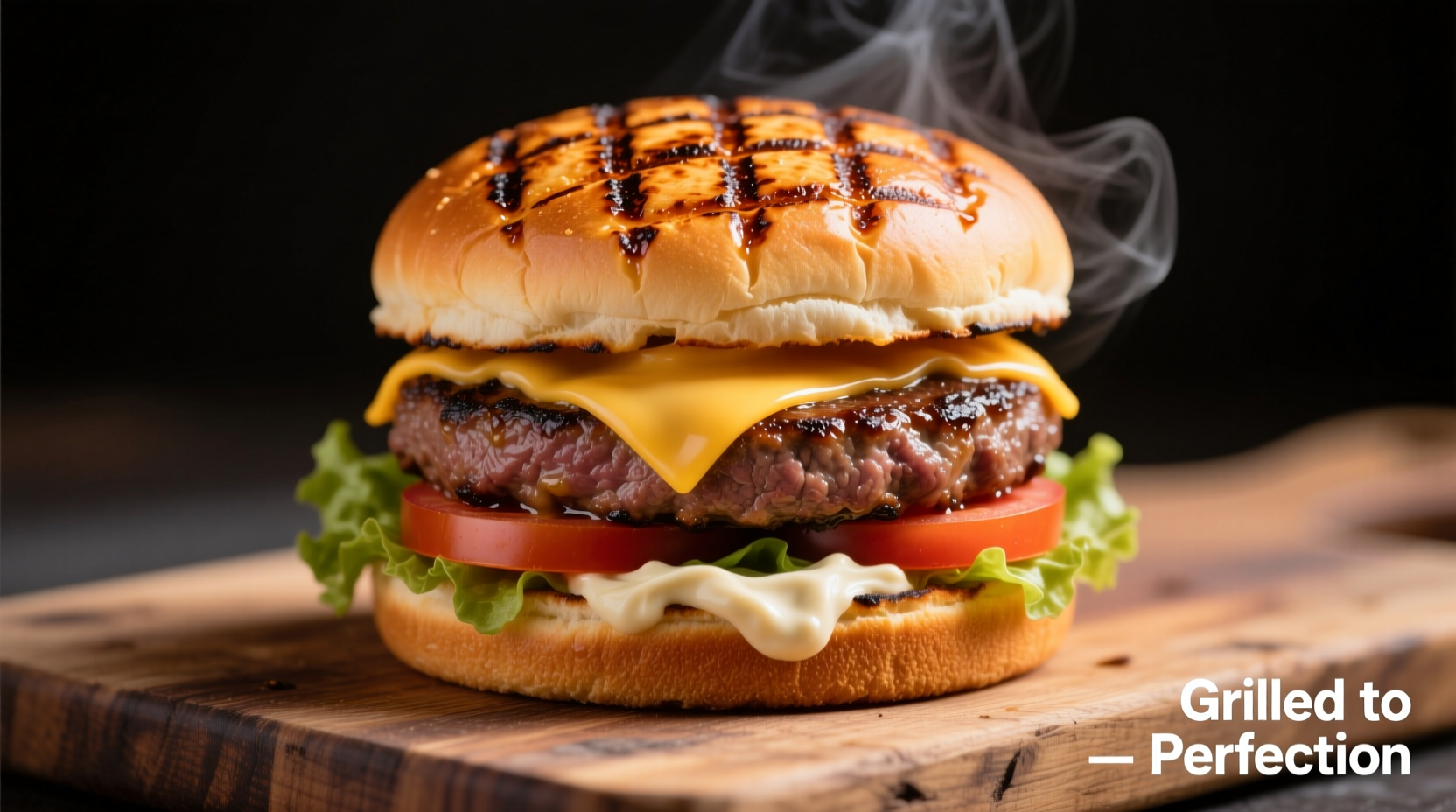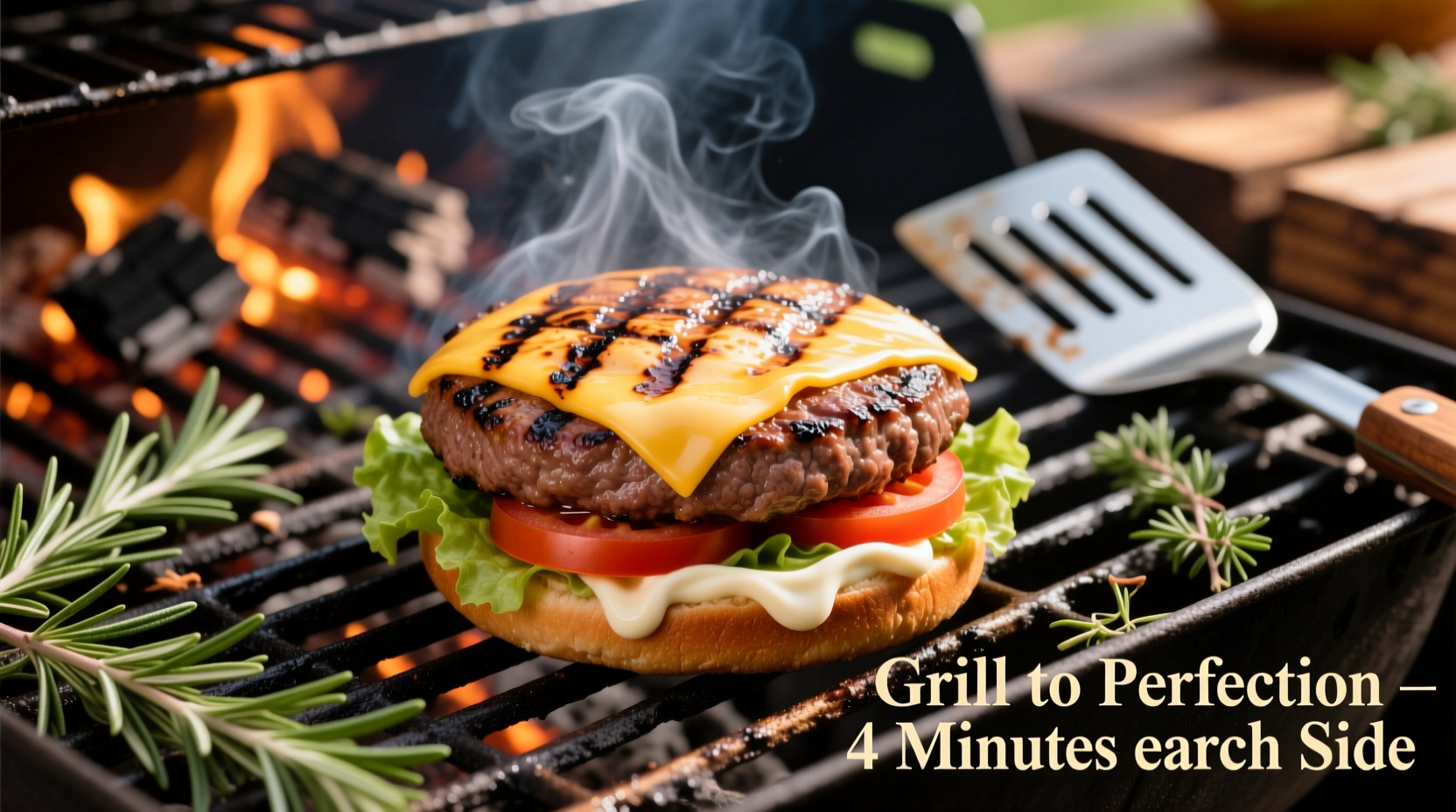Perfect grilled hamburgers require 80% lean/20% fat beef patties formed gently with a slight dimple in the center, grilled over medium-high heat (375-400°F) for 3-4 minutes per side for medium doneness, reaching an internal temperature of 145°F. Never press the patties with a spatula, flip only once, and allow 5 minutes resting time before serving for juiciest results.
Grilling the perfect hamburger seems simple, but achieving that ideal balance of charred exterior, juicy interior, and flavorful crust requires understanding the science behind the sizzle. After decades of testing techniques across professional kitchens and backyard grills, I've discovered that mastering just five critical phases transforms ordinary burgers into extraordinary ones. This guide reveals the precise methods backed by food science that guarantee success every time you fire up the grill.
Phase 1: The Foundation - Selecting and Forming Your Patties
Start with ground beef containing 20% fat content - the USDA recommends 80/20 as optimal for grilling. Leaner blends dry out quickly under high heat, while fattier mixes create dangerous flare-ups. Handle the meat minimally; overworking develops proteins that make burgers tough. Form patties slightly wider than your buns (they'll shrink 20-25% during cooking) with a shallow dimple in the center to prevent bulging.
Season generously with coarse salt and freshly ground pepper just before grilling - seasoning too early draws out moisture. For enhanced flavor complexity, incorporate 1-2% of your meat weight in umami-rich ingredients like Worcestershire sauce or mushroom powder directly into the blend.
| Burger Type | Recommended Fat Ratio | USDA Minimum Internal Temp | Optimal Grill Temp |
|---|---|---|---|
| Beef | 80/20 | 145°F (medium) | 375-400°F |
| Turkey/Chicken | 93/7 | 165°F | 350-375°F |
| Veggie | N/A | 165°F | 325-350°F |
According to the USDA Food Safety and Inspection Service, ground meats require higher internal temperatures than whole cuts because bacteria can spread throughout during grinding. Always verify temperatures with an instant-read thermometer rather than relying on appearance alone.
Phase 2: Grill Setup and Preheating
Whether using gas or charcoal, create two distinct heat zones. For charcoal, pile coals on one side; for gas, light only half the burners. This dual-zone approach provides flexibility when flare-ups occur. Preheat your grill to 400-450°F with the lid closed for 10-15 minutes - proper preheating creates the Maillard reaction essential for flavor development.
Clean the grates thoroughly with a brass brush, then oil them using tongs and a paper towel dipped in high-smoke-point oil like canola. This prevents sticking without adding excess fat that causes flare-ups. Never spray oil directly onto hot grates - it can ignite dangerously.

Phase 3: The Critical Cooking Window
Place patties on the hotter side of the grill with the dimpled side down. Resist the urge to press down - this forces out precious juices and creates flare-ups. The ideal flip timing? Exactly when you see liquid pooling on the uncooked surface, typically 3-4 minutes for medium-rare at 400°F.
Flip only once using a wide metal spatula. Position patties perpendicular to the grate lines for attractive crosshatch marks. For cheeseburgers, add cheese during the last minute of cooking and close the lid to melt evenly. Remember that burgers continue cooking during resting - pull them 5°F below target temperature.
Phase 4: The Essential Resting Period
Transfer cooked burgers to a wire rack (not directly on plates) and tent loosely with foil for 5 minutes. This crucial step allows juices to redistribute throughout the patty. Cutting too soon releases up to 40% of the moisture according to research published in the Journal of Food Science. During this time, toast your buns on the cooler side of the grill.
Phase 5: Assembly for Maximum Impact
Build your burger strategically: spread condiments on both bun halves to create moisture barriers, place lettuce next to catch juices, then add the patty. Add wet ingredients like tomatoes between dry components to prevent sogginess. For optimal eating experience, serve immediately while the bun retains slight crispness from toasting.
Troubleshooting Common Grilling Challenges
Problem: Patties stick to the grates
Solution: Ensure proper preheating and oiling. Wait until liquid appears on the surface before attempting to flip.
Problem: Excessive flare-ups
Solution: Move patties to the cooler zone immediately. Trim excess fat from meat beforehand and avoid marinades with high sugar content.
Problem: Uneven cooking
Solution: Create uniform thickness by using a burger press or measuring with your thumb. The dimple technique prevents doming during cooking.
Problem: Dry burgers
Solution: Increase fat content, avoid overcooking, and never skip the resting period. Consider adding 10% finely chopped bacon to lean blends for moisture retention.
Advanced Techniques for Culinary Excellence
Elevate your burgers with these professional methods: create a compound butter with herbs and garlic to melt on top during resting, or incorporate smoked sea salt for depth. For charcoal grills, add wood chunks like hickory or apple during the last 5 minutes for subtle smoke infusion. Experiment with temperature-controlled cooking by starting on high heat for sear, then moving to indirect heat to finish cooking without burning.











 浙公网安备
33010002000092号
浙公网安备
33010002000092号 浙B2-20120091-4
浙B2-20120091-4